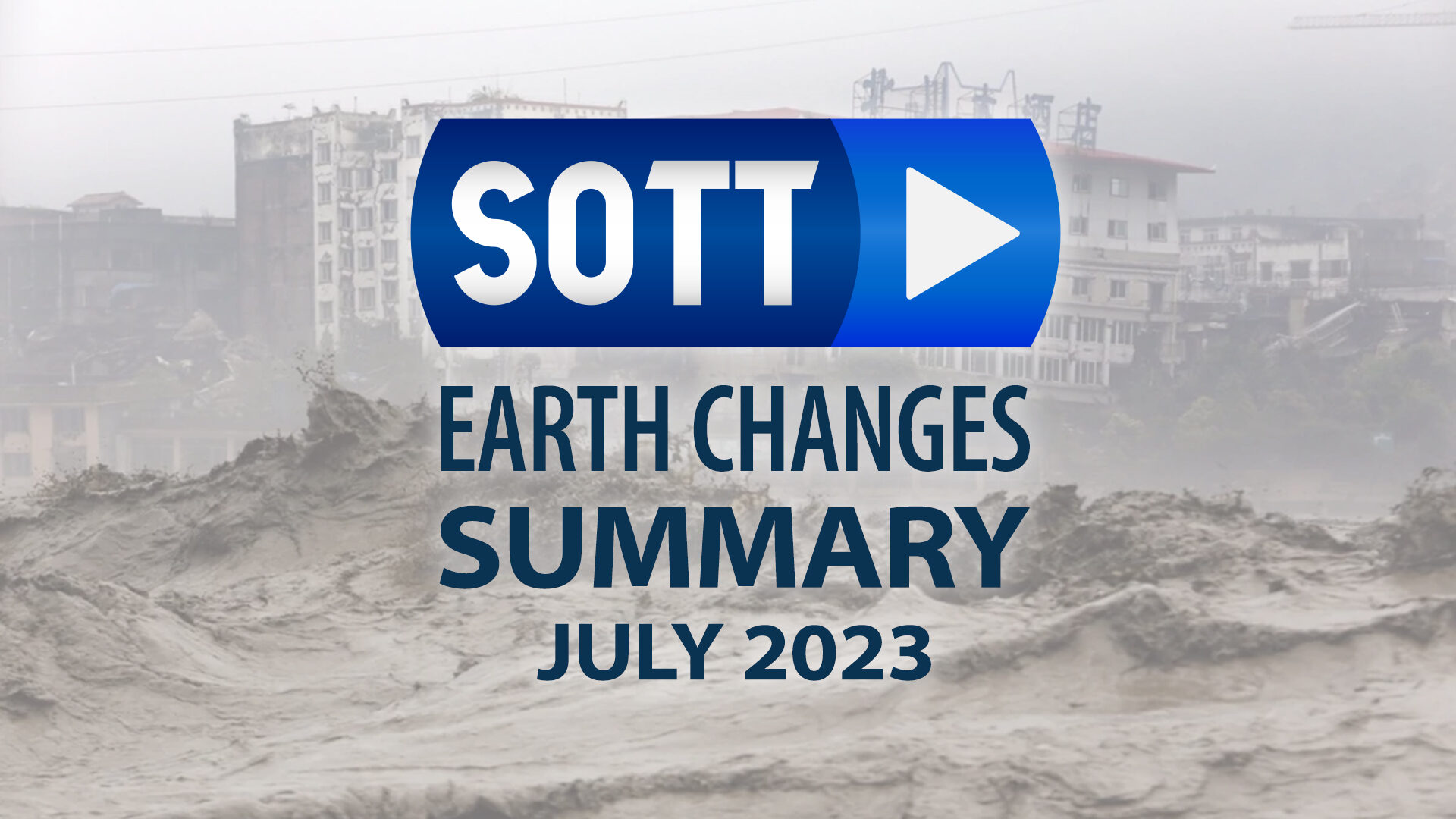It's worth noting that global warming alarmists blame hot temperatures for the raging wildfires around the world, but even if there has been a slight increase, some have been reported as arson (almost all of them in Greece for example), and others could have been caused by the increase in thunderstorms and isolated lightning strikes. In lesser cases, meteorites and overhead explosions can cause forest fires, in addition to outgassing.
Increased accumulation of conductive dust (volcanoes, comets, etc.) or rain promotes electrical discharges between higher layers of the atmosphere and the ground, which can manifest as lightning, intense tornadoes, waterspouts, more severe storms, or hurricanes. Something we can see quite clearly this month.
Here are some of the most remarkable precipitation and flooding events around the world for July 2023:
- Bacolod and Manila, Philippines - 3 floods in 11 days triggered by Super Typhoon Doksuri.
- Beijing, China - Heaviest rainfall in 140 years triggered by Super Typhoon Doksuri.
- Sichuan Province, China - 11.8 inches of rain in 14 hours - 40,000 evacuated.
- Sochi, Russia - 2 months of rain in 24 hours.
- Milan - Italy - 2 weeks of rain in just 3 hours.
- Netherlands and Germany - Storm Poly became the strongest summer storm on record.
- Southwest Japan - Biggest rainfall on record - 16 inches of rain in 24 hours.
- Lahore, Pakistan - Biggest rainfall in 30 years - 11.4 inches of rain in 10 hours
- Kentucky - 11.2 inches of rain in 24 hours - Historic rainfall.
- Vermont - 9 inches of rain in 24 hours - Historic flooding.
- New York - 7 inches of summer rain in 24 hours - Severe flooding.
- Chicago - 6 inches of rainfall - Historic summer flooding.
- Valencia and Castellon, Spain - Hailstorm destroys more than 20,000 hectares of crops.
In recent years, a larger percentage of precipitation has come in the form of intense single-day events. Nine of the top 10 years for extreme one-day precipitation events have occurred since 1996And some unseasonable snow events:
- Europe's Dolomites and Alps - Rare summer snow.
- Skardu, Pakistan - Unexpected summer snowfall breaks 18-year record.
- Himachal Pradesh, India - 4 feet of summer snow.
- Sierra Nevada - California - Snowpack at a staggering 1,000% of normal
With El Niño conditions brewing for later in 2023, cold temperatures will bring ice, sleet, and snow in January and February to those living on the I-95 corridor, between Washington D.C. and Boston.Again, are we witnessing the first stages of an ice age?
The Sun has entered into the modern Grand Solar Minimum (2020-2053) that will lead to a significant reduction of solar magnetic field and activity like during Maunder minimum leading to noticeable reduction of terrestrial temperature. - Zharkova, 2020Time will tell. Just remember that natural climate changes are not linear and periods of calm can be followed by sudden and rapid changes. Look for the signs and prepare accordingly.
Or watch on Odysee.
To understand what's going on, check out our book explaining how all these events are part of a natural climate shift, and why it is taking place now: Earth Changes and the Human-Cosmic Connection
Check out previous installments in this series - now translated into multiple languages - and more videos from SOTT Media here, here, or here.




There was the Campfire fire in Paradise, California about 5 years ago. At about the 18 minute mark of this video it is discussed. I was in a true wild fire and it spreads from a point. In the link, they note several things. Fire erupting at the same time in houses across the street from each other, a smart meter bursting into flame within a storage building, plastic not melting but aluminum and glass melting. The firefighters involved stated this is not a normal fire. [Link]